The sun rises by 6:30am, so it's nice that our cabin is equipped with a very light-tight curtain, as well as a mesh curtain that works like a screen, in that it allows light in but privacy from the outside. I started my day once again enjoying the sunrise over the water with a cappuccino and a crossword puzzle, with only Captain Jeremy and one other passenger in the lounge.
Sunrise over the Gironde River
Saturday, June 24
Our outing this morning was to Chateau Lagrange in Saint Julien, although we learned a bit about Fort Medoc as we gathered by the coaches. The area where it was built was very swampy, so they built a canal in front to drain the water and allow stable land to build on, as well as a moat around the entire fort.
On the way to the chateau, we learned about grape cultivation. Grapevines can live for more than 100 years, but at around 70 or 80, their yield is significantly lower, although the quality of the grapes themselves is quite good. Our guide compared them to people: "At that age, we have lots of experience and wisdom, but maybe not quite so much energy." So at around age 80, they pull up all the grapevines and either let the field lie fallow for a year or two, or they plant something like corn or hay to replenish the soil. Once they plant the new vines, it takes 4 or 5 years until they are mature enough to produce a good yield.
When we arrived at Chateau Lagrange, we saw that it was a newer building than some others we'd seen, but it blended with the style of the other hundreds-of-years-old buildings on site. Our chateau guide, Nicholas, spoke beautiful English and was very knowledgeable about the winemaking process. One particularly interesting aspect of this chateau was that they have a "sample garden" with rows of many different types of grapes, including ones that they don't grow for wine production, so that visitors can see (and smell!) the many varieties of the larger region. Also, although Bordeaux generally makes red wines (with the exception of the region of Sauterne, which we'll visit later), Chateau Lagrange does make some white wines in addition to their reds.



As is the case with many of the chateaux we saw, Chateau Lagrange has a beautiful main building with a tower, and in front there is a large lawn with beautifully manicured gardens and a pond, and walkways of crushed white stone running through it.


Nicholas led us into the vast aging room, which was filled with stacked casks, carefully divided by year. He explained that the center band of the barrels is traditionally stained red, a tradition that began to conceal the messy look of runoff from topping off the barrels. The barrels are topped off because there is inevitably some evaporation, which is charmingly referred to as "the angels' share." I learned later that the red stain is made from the "lees," or remnants of dead yeast left at the bottom of the barrels, which is applied with a sponge and allowed to soak into the wood. No doubt that accounted for the delightful aroma in the room! It was particularly fruity and yeasty here, with less mustiness than in previous chateaux. Nicholas also noted that they use egg whites to stabilize the wine as it ages, and the yolks are used in a local treat called a canele (which we saw in bakeries all over Bordeaux, but sadly never got a chance to try).
We then proceeded to an elegant tasting room, with modern black buckets for unwanted wine. (There was very little unwanted wine, I should note.) We began with a white wine called "Les Fleurs du Lac," or "the flowers of the lake," which was a pleasant, crisp wine made from sauvignon blanc and semillion grapes.
Next we sampled two of their red blends. Note that both these labels state "Saint Julien." We later learned that there are thee different Chateaux in Bordeaux called Chateau Lagrange (although it's not clear if they are connected; it's not unusual for vineyards to have been divided between sons and to have similar or identical names), the others being in Pomerol and Graves.
I was caught swishing again!!
We had time to stroll the grounds after our tasting. Various types of hydrangeas are very popular, as are roses of various colors and bleeding hearts. Interestingly, gardens tend to fall at one of two extremes: either they are carefully manicured, with topiaries, pristinely shaped flowerbeds, and deliberate levels and color combinations; or they are a riot of untamed colors and heights, as if someone merely chucked a bucketful of wildflower seeds on the ground and let nature take its course. Both options are breathtakingly beautiful.
On our way back to Fort Medoc, our guide pointed out a number of especially grand and architecturally interesting estates. This one, called Chateau Cos d’Estournel, is considered one of the most beautiful in Bordeaux. Its non-traditional style is heavily influenced by Indian architecture. Its elaborately carved front doors were shipped from India. I particularly liked the little brass bells hanging from the turrets.
Right next door (if a huge estate can be considered to have a "next door") was another famous estate, Chateau Lafite-Rothschild. Both estates are in the city of Pauillac,
We returned to the ship in time for a slightly early lunch. The bike tour had clearly gotten back before we did! We didn't get any photos, but the ship had an interesting pulley-and-crane system (you can see the two crane arms just above the end of the gangway) to lift the bikes onto the sundeck. Three bicycles were strapped together (by the indefatigable Bora, of course), then raised over the railing and parked next to the pilot house.
I think this was the only day I didn't have soup for lunch (as I recall, it was cream of asparagus, not really my thing), but I enjoyed some French potato salad, green salad with pancetta and walnuts, rice, and salmon, as well as an incredibly refreshing gazpacho shooter. Might have had two of those, actually.
After lunch we had some time to explore Fort Medoc. The Fort is very tourist friendly and has lots of panels in both French and English which give the history of the fort and show its layout. It was designed by a nobleman and military engineer, Marquis de Vauban, built between 1689 and 1691 to protect Bordeaux from invasion from the river. The star shape of the citadel was characteristic of his designs.
The fort includes a number of buildings, some of which are still being used. The day we visited, a special needs art class was going on, and the teacher welcomed us in to watch the students paint and sculpt. In another building, professional artists had set up a gallery with paintings and sculptures for sale. One of the unused buildings had a number of barn swallows' nests in the rafters, and the swallows swooped around freely inside the building!


The far end of the fort was dominated by this magnificent stone archway. One of the buildings near that side featured a number of children's games, including table hockey, a ring toss, something like tabletop shuffleboard, and something that looked like an early version of skee-ball featuring an open-mouthed frog as one of the targets.

Many of the buildings had partial walls attached. The walls had been knocked down when no longer needed as the fortress, but it was interesting to see where they had originally stood. Throughout Bordeaux, we found many buildings and towers which were originally connected to walls that had been torn down, but with remnants of them still remaining. Although there wasn't much for flowering gardens here, we still saw lots of butterflies and huge dragonflies swooping around, and a few skinks slipping into the cracks in the stone walls.


We headed back to the ship in time for an early dinner, which included frogs' legs, served with a soft and creamy poached egg. (For the record, they really do taste like chicken.) The main entree was beef cheeks, which were tender and flavorful, and served with - of course - French fries. One of the elegant features of the Crystal Dining Room was a pair of absolutely gigantic pepper mills which Florin was more than happy to wield for us. For dessert we had an apple tart with caramel sauce. I found it interesting that, since the ship caters mainly to Europeans (UK citizens were by far the most well-represented, with North Americans being perhaps 15% of the passengers), desserts tended to be less sweet than our American palates are used to, which I really enjoyed. You taste the flavors and the freshness rather than just the sweetness.

The reason we had an early dinner tonight was that we were heading for a string quartet concert at Chateau d'Agassac. We were greeted with a choice of champagne, white wine, or red wine when we arrived. The chateau looks like a Cinderella castle, with its pointed towers.
The walkway to the castle was lined with magnolia trees with huge blossoms as big as my open hand (the Latin name is Magnolia Grandiflora, and for good reason).
The program was a beautifully varied mix of eras and styles, performed by musicians from the Bordeaux Opera. The cellist introduced each piece in charmingly broken English, explaining that one of the musicians who sometimes performs with them is an Englishwoman who wrote up the introductions, so she wasn't always sure how to pronounce some of the words ("Elizabethan" took a few tries, quite a few giggles, and a little help from the audience). The music was just spectacular and the acoustics were marvelous. The first violin broke a string at the end of the first piece so we had to wait for a few minutes while he performed some backstage repairs, but it was nice to have a few moments to look around the room.

By the end of the performance it had gotten uncomfortably warm in the hall, so we were glad to hop back on the air-conditioned coaches and get back to the ship - although while we were at the concert, the ship had moved on to Bordeaux, so we re-embarked back in Bordeaux on the last night of the week-long
Fete le Vin (Festival of Wine), so the night life was going strong! We went into the lounge for a late-night cocktail and someone spied what appeared to be fireworks over the river, so we all headed out to the deck where were discovered there was a drone show going on! Better than fireworks, the drones formed the shape of a giant wine barrel that turned and spun, then a giant bottle of red wine that poured itself into a wineglass. The show ended with a giant spinning "Bordeaux fete le Vin" logo.
And at last, we headed off to bed in anticipation of yet another adventure tomorrow.






















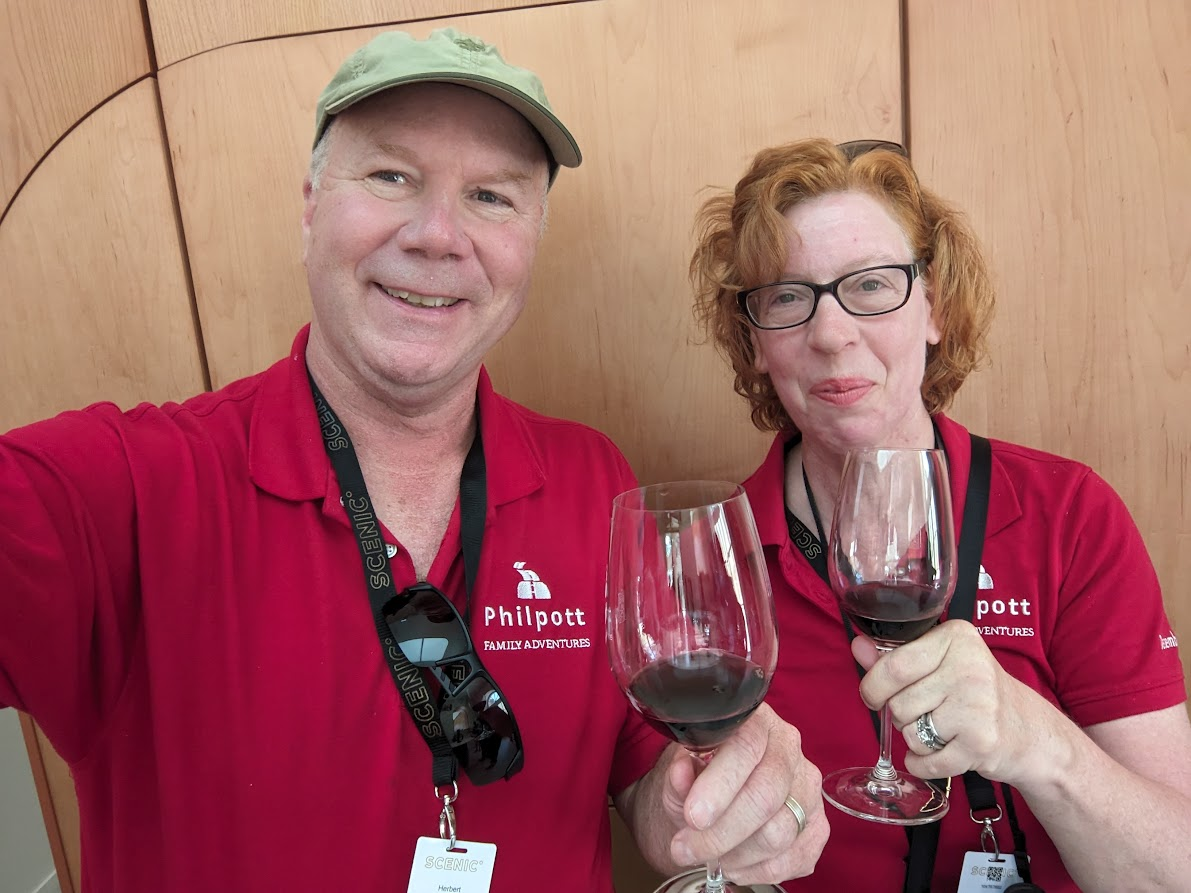


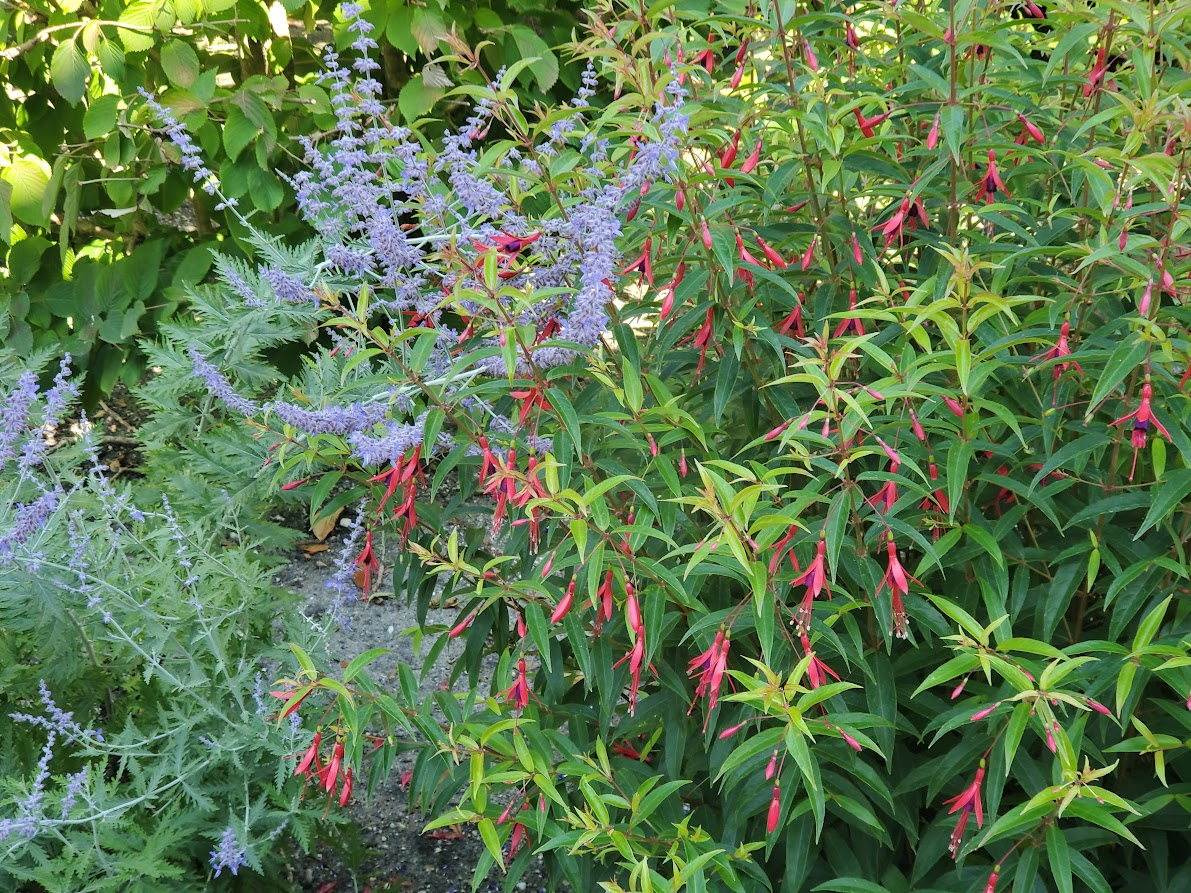





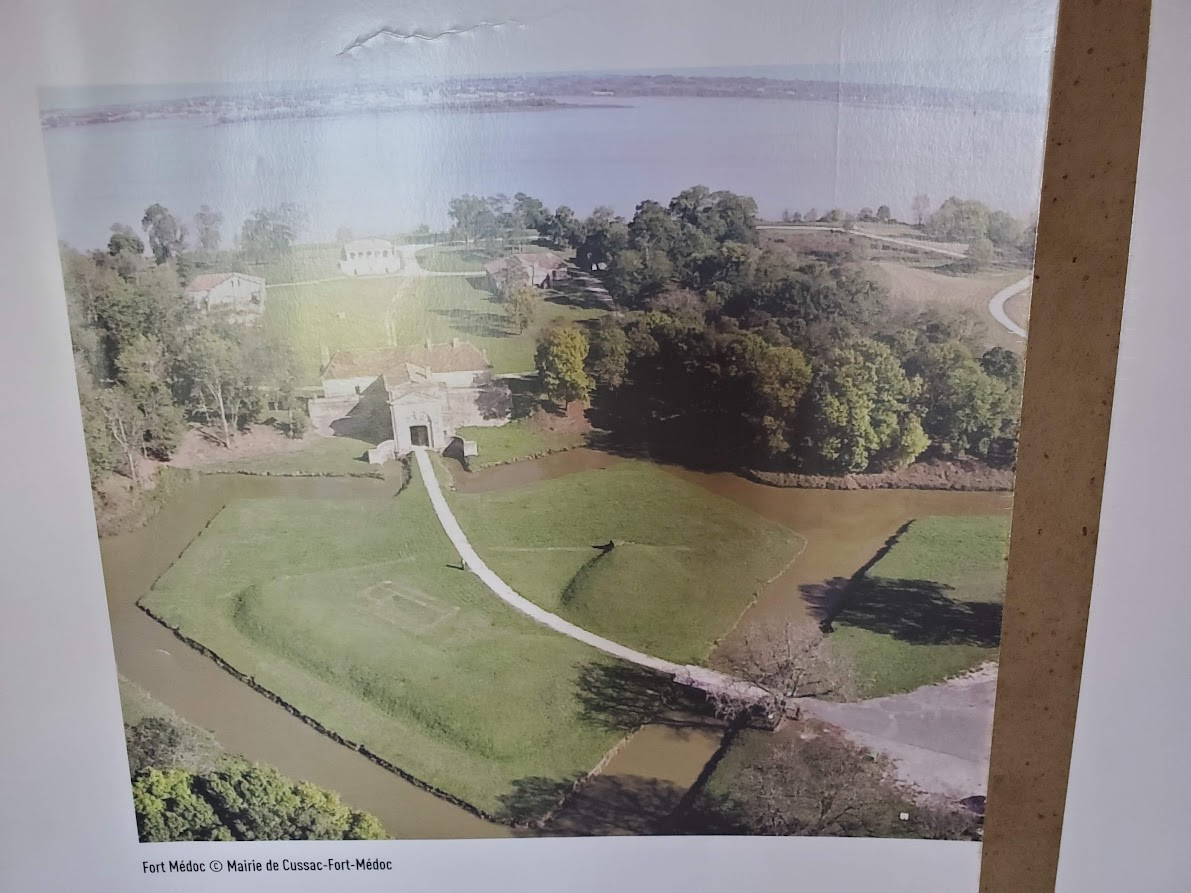



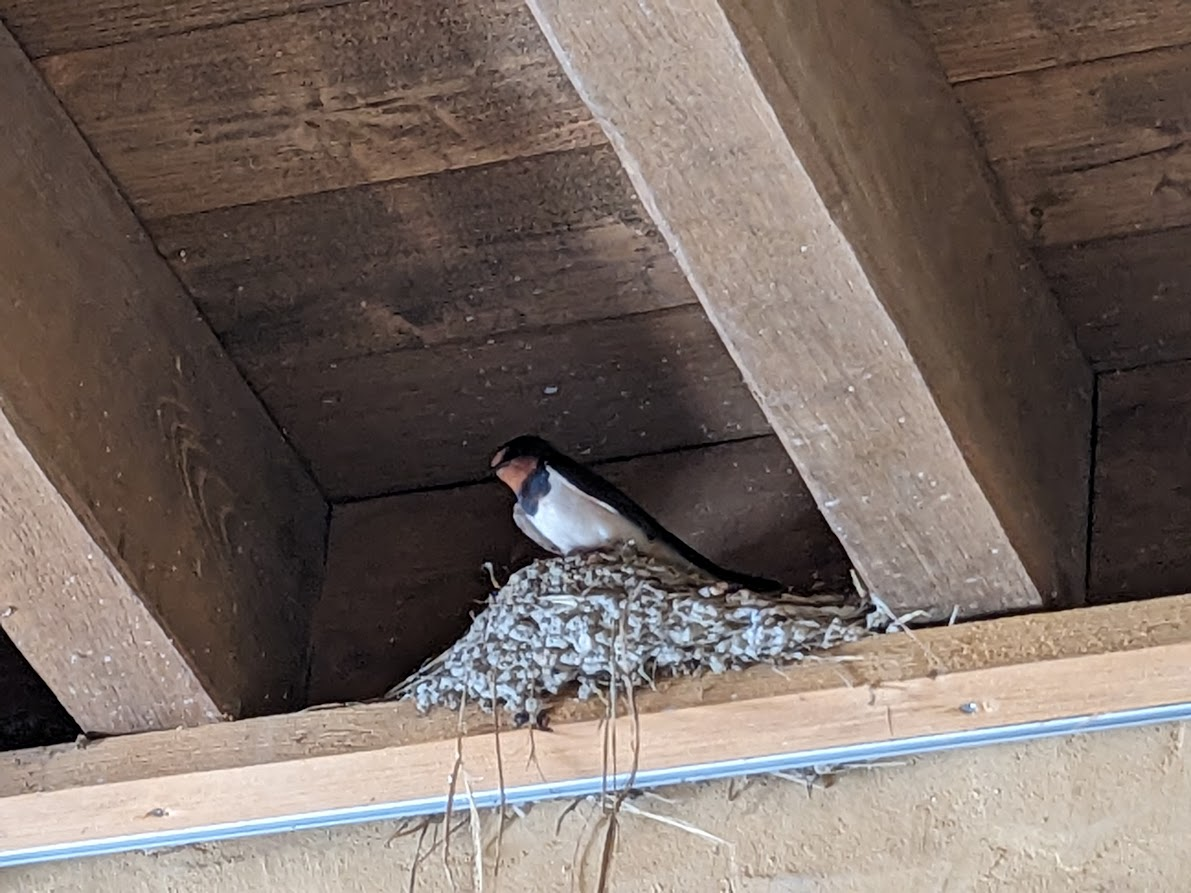


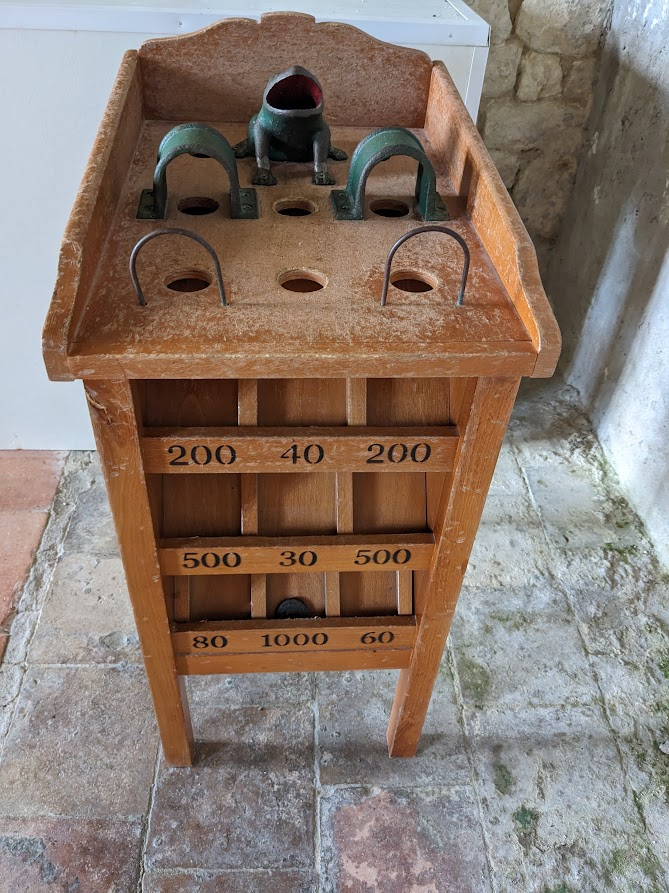











No comments:
Post a Comment